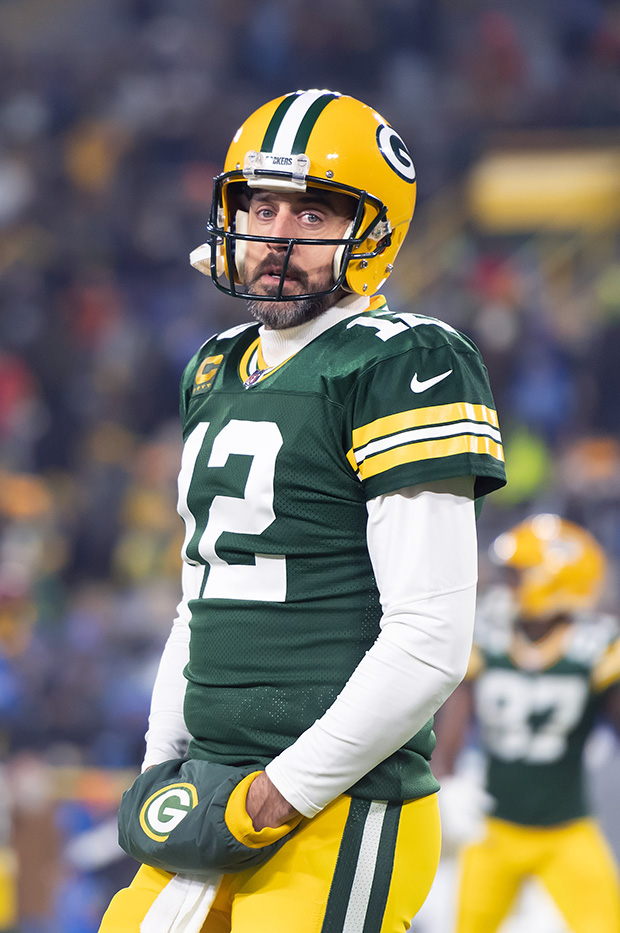
Is Aaron Rodgers following in Brett Favre‘s footsteps? Favre, 53, joined the New York Jets after coming out of retirement in 2008, and it seems that Rodgers, 39, might be the next Green Bay Quarterback to ditch the Cheeseheads for “Gang Green.” Months after Rodgers admitted that his current contract with the Packers isn’t viable for Green Bay, sports journalist Trey Wingo tweeted on Mar. 7 that “per sources, Aaron Rodgers and the Jets had conversations today. While nothing is imminent, Rodgers is open to the idea of going to New York.” (h/t The NY Post).
The NFL Free Agency period doesn’t open until Mar. 15, and The Post‘s Brian Costello noted that if Wingo’s message were true, it “would mean GB [Green Bay] gave the Jets permission to speak with Rodgers, or it would be tampering.” Aaron has played with Green Bay since the 2005 season, leading the team to Super Bowl glory in 2011.

Aaron Rodgers’ current deal with Green Bay means he has $59.465 million guaranteed if he plays in 2023, per ESPN. This is part of the three-year, $150 million contract extension he signed in March 2022. It carries a salary-cap charge of $31,623,570 for next season, which puts Green Bay behind the eight ball in securing talent. It’s possible for the team to trade Aaron, but it’s not great — because Green Bay would be stuck with, as ESPN put it, “massive amounts of dead money on their salary cap.”
Rodgers acknowledged this during a January episode of The Pat McAfee Show. “There’s a lot of teams, because of COVID, that are strapped, and you’re seeing with a lot of different contracts, they’re pushing more money out in deals,” said Rodgers, per ESPN. “They’re creating void years to allow for an easier cap hit, so there would have to be some adjustments, for sure.”
In the Summer of 2022, Rogers said he planned to finish his career in Green Bay, but during the Pat McAfee appearance, he was open to being traded. ” “I hope there’s some gratitude on both sides if that happens,” he said. “But again, that doesn’t open the door for any conjecture, honestly, on my side. And I’m not saying that to be cryptic. I’ve got to figure out what I want to do, and then we’ll see where all the parties at and what kind of transpires after that.”

The situation echoes what happened with Brett Favre in 2008. Favre announced his retirement in March 2008, but that July, he petitioned the NFL to undo his decision (ultimately, pulling a Tom Brady more than a decade before Brady made the same move.) The Packers decided it was time for them and Favre to go their separate ways and traded him to the Jets.
“He was the ultimate rental,” wrote Rich Cimini for ESPN in 2016, when Favre was inducted into the Pro Football Hall of Fame. “A hired gunslinger who landed with the Jets because he had no other options. He teased the fan base with an 8-3 start, but his arm gave out, and everything fell apart, creating just another ‘what might have been’ chapter in Jets’ history.” During his time at MetLife Stadium, Favre seemed rejuvenated – writer Danny Heifetz penned the 2018 article “Brett Favre Was Better With The Jets Than You May Remember” – but after tearing his biceps, the team fell apart. The Jets failed to make the playoffs, and Favre signed on to play for the Minnesota Vikings until he retired for good in 2011.


